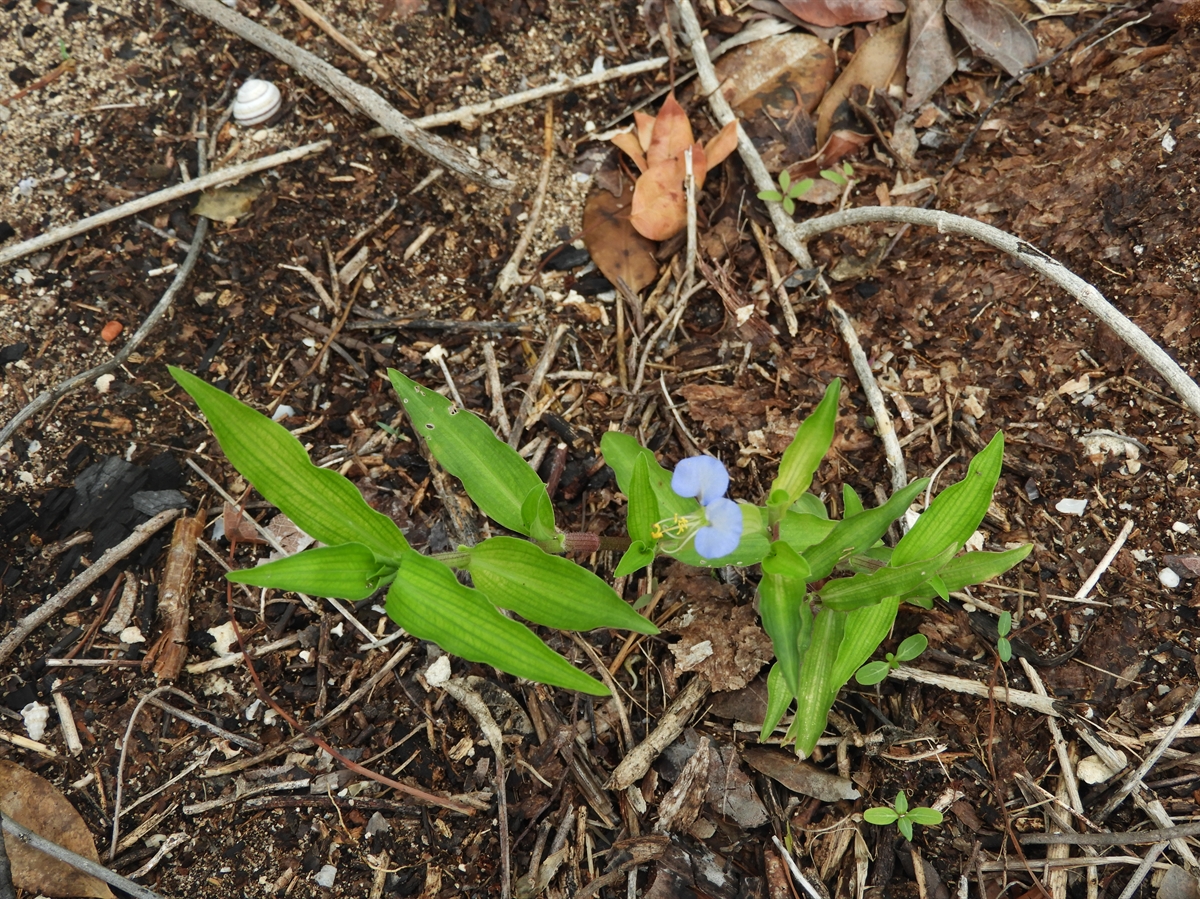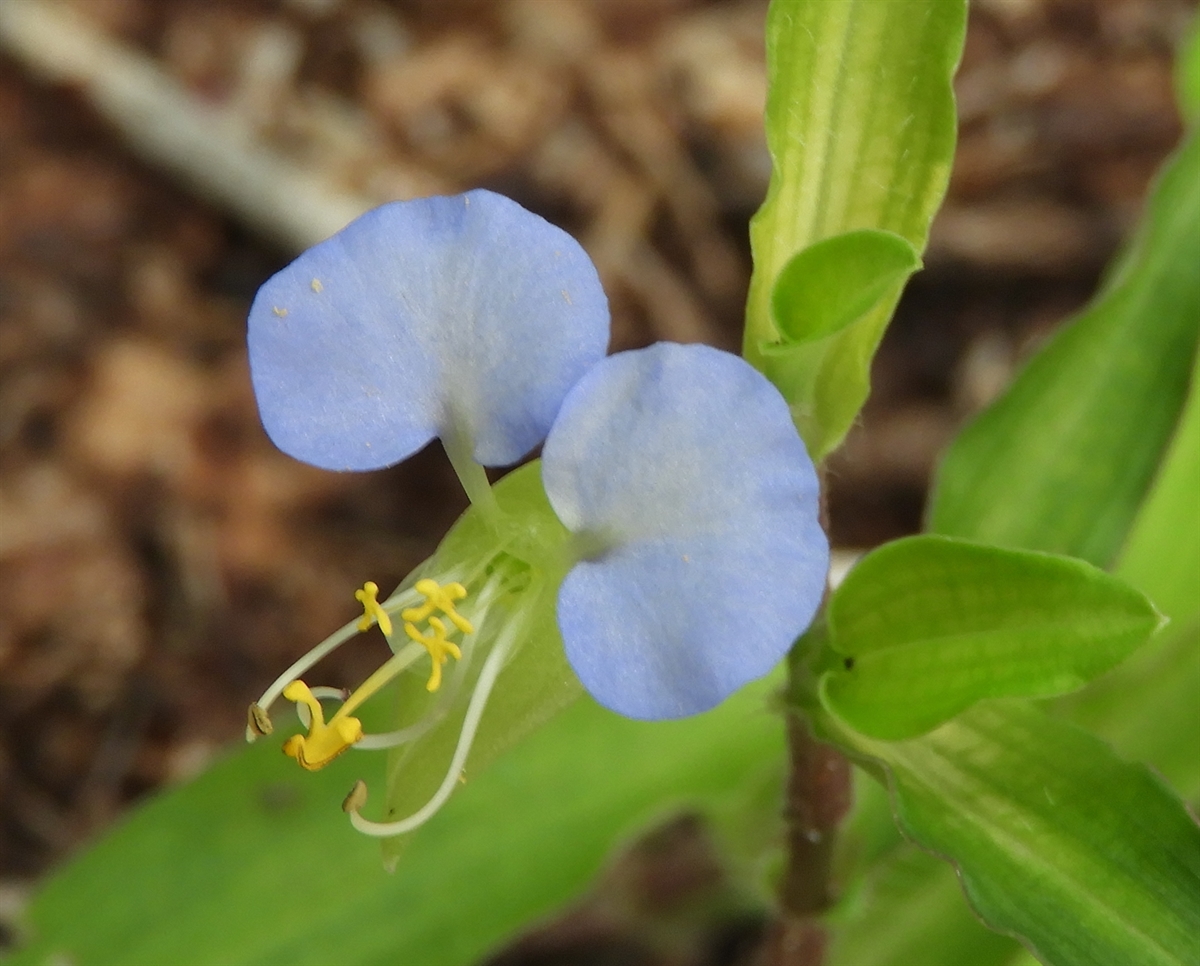Habit: Commelina erecta grows as a creeping perennial herb along the ground or up on other vegetation to 50 in length, rooting at the nodes. The leaves are arranged alternately, to 10 cm in length and 3 cm wide, ovate to lanceolate to oblanceolate with parallel veins and an entire margin. The leaf base is clasping and may overlap with other leaves. Vegetation may or may not have slight pubescence.
The complete, perfect and imperfect, appearing zygomorphic flowers are arranged with 1-3 flowers in cymes that are in a terminal spathe. The spathe is not open along the adaxial side. The peduncle is pubescent. The calyx has 3 unfused, green, sepals. The corolla has 3 blue petals. In the imperfect flowers there are 3 unfused, stamens, 2 staminodes and no ovary. In the perfect flowers there are 3 unfused, stamens, 2 staminodes and the ovary is superior and has 3 locules and 3 ovules. The fruit is a capsule.
Habitat: Commelina erecta grows in Human Altered environments (yards and gardens).
Distribution: Commelina erecta is NOT native to the Lucayan Archipelago and is not found in natural areas but does occur throughout many of the island groupings. It is native to North, Central, and South America as well as central and southern Africa.
Medicinal/Cultural/Economic usage: Commelina erecta is not known to be used medicinally in the Lucayan Archipelago.
It is used as an ornamental.

